I had the exciting experience of a behind-the-scenes tour of NASA’s White Sands rocket engine Test Facility in Las Cruces, NM. The most notable engine tests were on the Apollo Command Module rocket engine and the Lunar Module (LM) Ascent and Descent engines in the 60s.
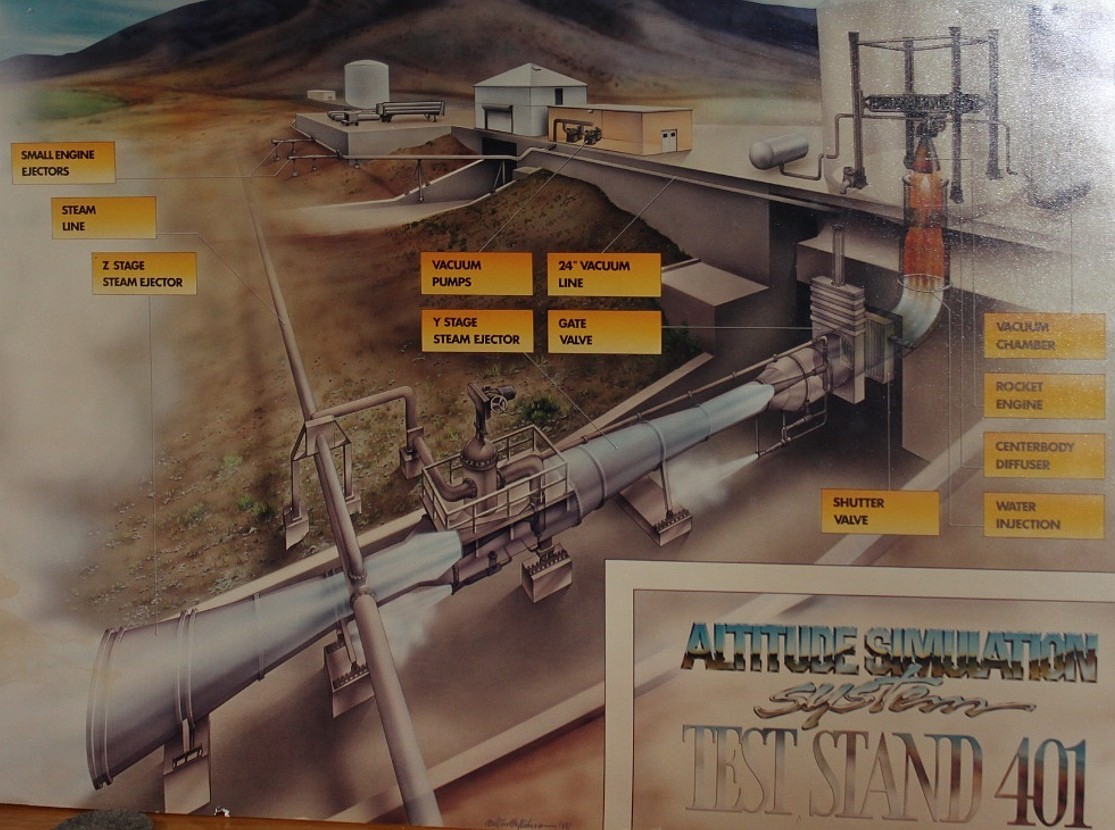
The first rocket engine test occurred here on September 22, 1964; this NASA facility in Las Cruces, NM has performed development and certification testing of space propulsion systems for manned and unmanned spacecraft in the cold void of outer space. (Image courtesy of Loretta Taranovich)
During my exclusive tour, I was able to experience what it was like there in the 1960s when the Apollo program was in full swing. Later, I also experienced the present day rocket engine test facilities and actually got a chance to go inside one of the Test Stands (TS) where active rocket engine testing under a vacuum is performed today for NASA and its contractors.
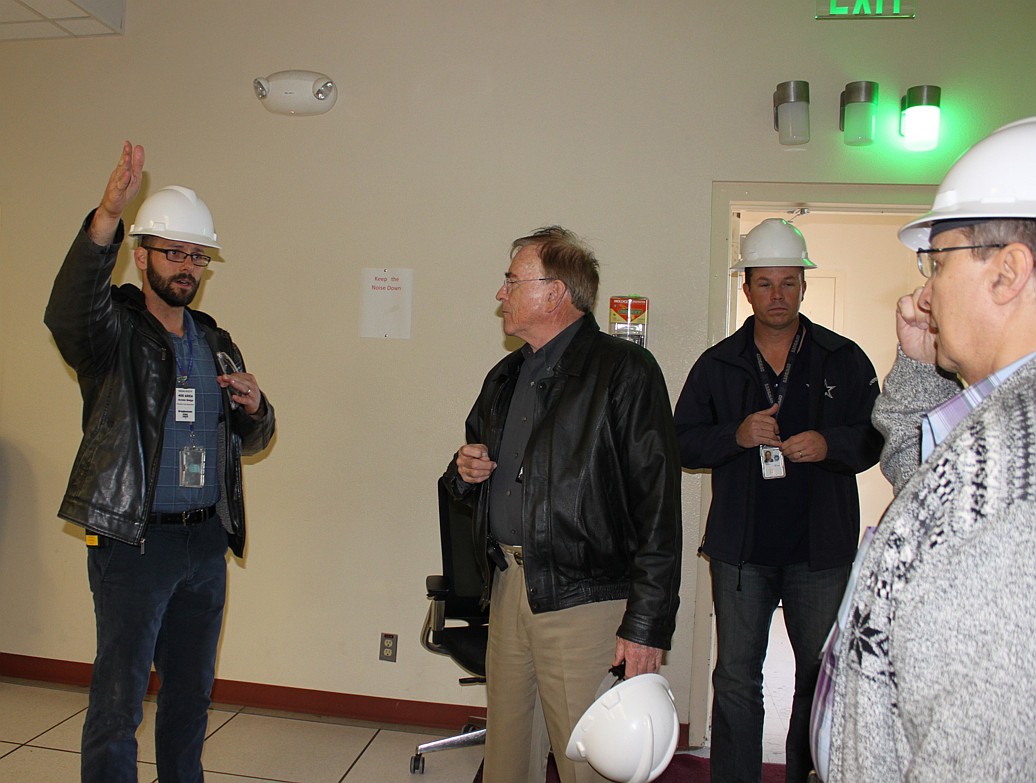
My guided tour of the test facility; Ray Melton, NASA retired engineer, is second person from the left (safety helmet in hand) and I am the fourth person on the far right side of the image. Melton was part of the NASA and contractor team at White Sands Test Facility (WSTF) working on the spacecraft propulsion systems that enabled the Apollo 11 lunar module (LM) to land on the Moon July 20, 1969 (Image courtesy of Loretta Taranovich)
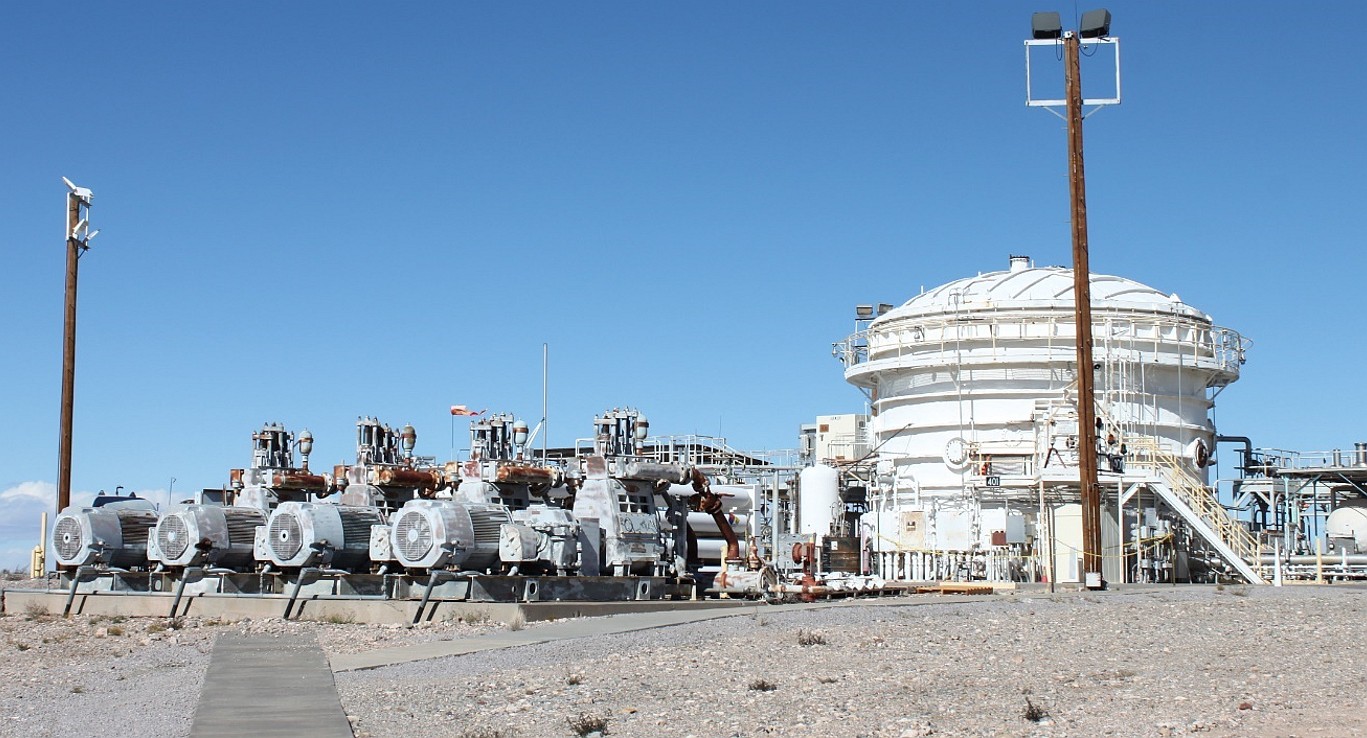
One of the Test Stands (TS) is shown here with the domed top cover. That dome cover is lifted by crane so that the rocket engine under test can be lowered inside the dome via another crane and set into place for testing. (Image courtesy of Loretta Taranovich)
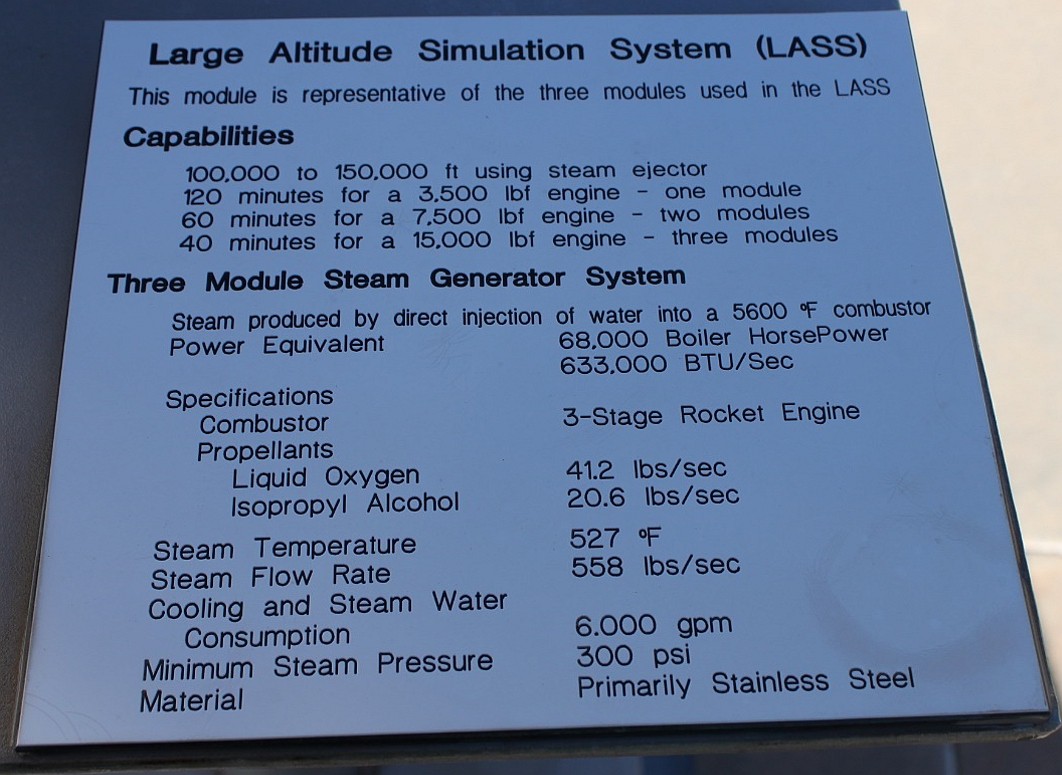
The Large Altitude Simulation System (LASS) specifications (Image courtesy of Loretta Taranovich)
This system provides a start altitude of about 35,000 m (115,000 ft) and maintains Test Stands (TS) 401, 403, or 405 at greater than 30,500 m (100,000 ft) during rocket engine firing. TS-405 can support even higher thrust levels when testing solid rocket motors.
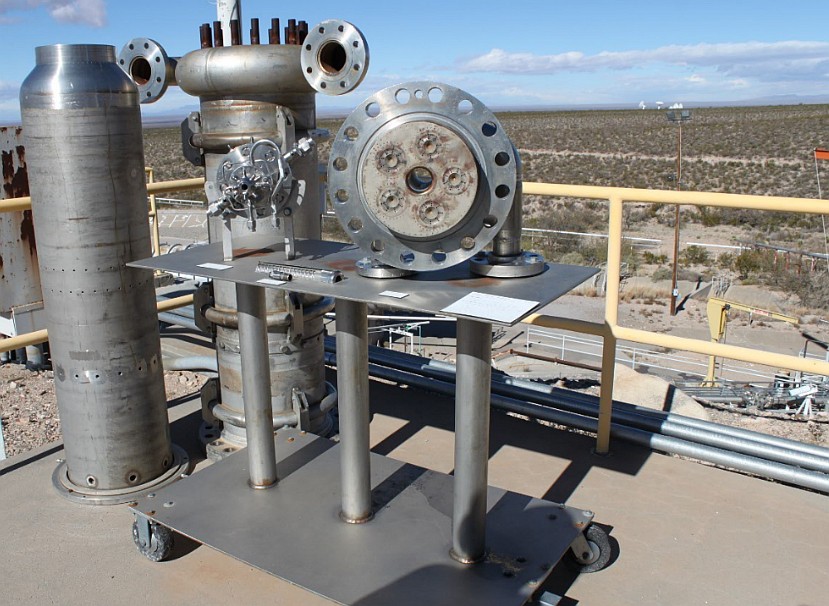
This photo shows components of one of three-module chemical steam generators that power large, two-stage ejector sets of the LASS. (Image courtesy of Loretta Taranovich)
NASA’s vacuum test stands simulate a propulsion system’s intended operating environment. This enables engineers/scientists to verify how a particular propulsion system will operate when it is put into service at a particular altitude level, even in the cold void of space. When a propulsion system is installed inside one of these enclosed test stand chambers, the chamber is evacuated to simulate altitude conditions. A vacuum is maintained during rocket engine firing within a sustained pressure environment of that which the spacecraft will experience in space.
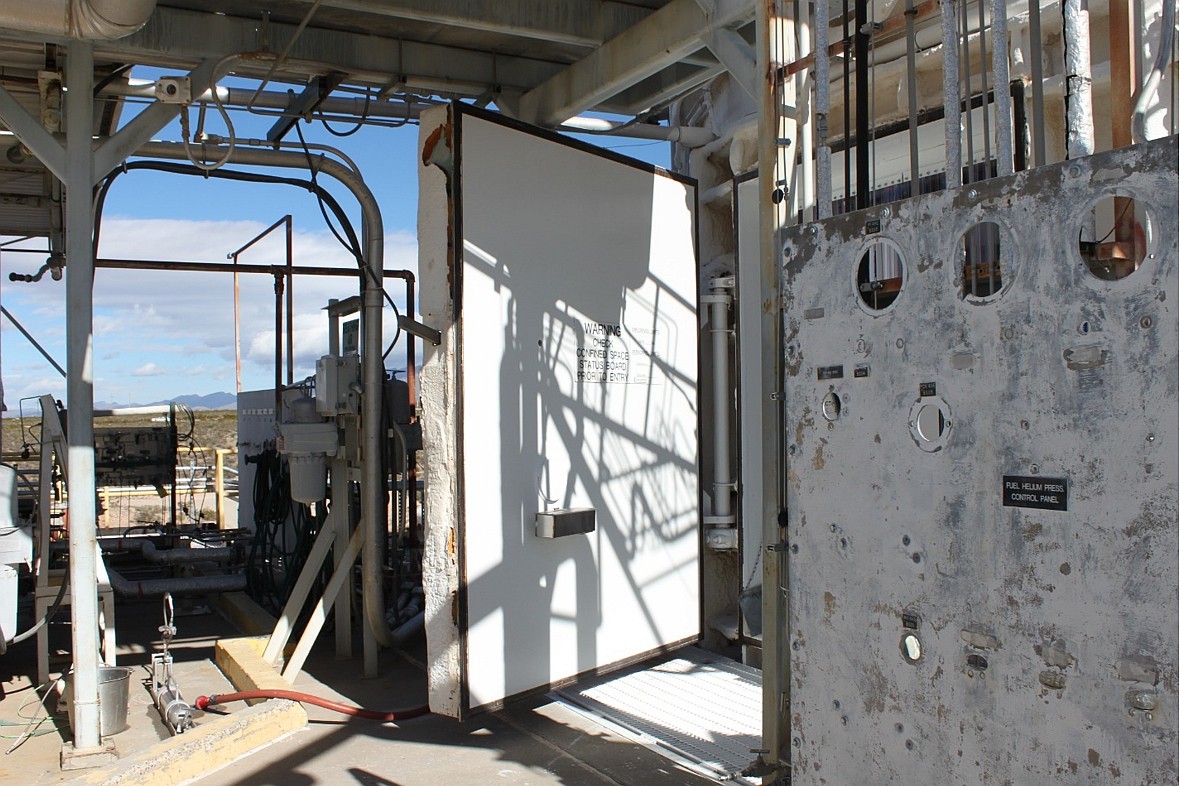
One of the Test Stands (TS) with the massive, thick electro-mechanical door that enables access to test personnel and later seals shut, tightly sealing the chamber preparing for evacuating the air inside and test firing an engine. (Image courtesy of Loretta Taranovich)

The NASA Cassini spacecraft is shown here, inside one of the WSTF Test Stands, firing its propulsion engines (Image courtesy of NASA WSTF)
I also had the neat experience of traveling below ground under the rocket test and monitoring facility. We journeyed down and were transported back in time as we walked across this lower level floor, passing by a 1960s set of vintage test racks and into a tunnel that had numerous cables running from the data monitoring and control facility to the rocket engine Test Stands.
The Fallout Shelter sign, in this lower level, brought me back to the 50s and 60s during my days in grammar school when we had air raid drills that prepared us to take shelter in the case of a nuclear attack by Russia.

A former Fallout Shelter was a remnant of the Cold War (Image courtesy of Loretta Taranovich)
As we walked on, I noticed a small round marking on many of the old floor tiles. Ray Melton explained that under those designated, marked tiles, in this underground area, there was, and still is, drinking water containers, canned food, and other needed supplies.

These strange markings revealed survival items that would sustain life for a time during a nuclear attack (Image courtesy of Loretta Taranovich)
I asked Melton how the tiles were lifted if the evacuees needed those supplies. He took me upstairs, over to a very thick safety protection window in the control center, and showed me the suction cup device used for tile lifting and removal.

The suction cup lifting device for removing the Fallout Shelter floor tiles, in the underground area below, in order to access stored food and supplies during a nuclear attack (Image courtesy of Loretta Taranovich)
This facility is still in full operation for rocket engine testing as well as for testing and evaluating potentially hazardous materials and space flight components. My copyrighted book entitled “Guardians of the Right Stuff”, coming out this summer of 2020, begins after the tragic, fiery death of all three Apollo 1 astronauts, Edward White, Command Pilot, Virgil "Gus" Grissom, Commander, and Roger Chaffee, Pilot on a test stand at Kennedy Space Center on January 27, 1967. This incident immediately kicked off a technology center, headed by Dave Pippen, whose charter was to vigorously test materials and components which would be flown on all future spacecraft, at NASA’s WSTF in Las Cruces, NM. This technology center still exists today at this same facility.
 Steve Taranovich
Steve Taranovich
Discussions
Become a Hackaday.io Member
Create an account to leave a comment. Already have an account? Log In.